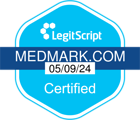
SAMHSA’s Advisory issued in early March 2016 provided substance abuse treatment professionals with a few new recommendations regarding buprenorphine treatment for opiate dependence. Your choice of either Zubsolv or Suboxone may be the biggest result of the Advisory.
The Sublingual and Transmucosal Buprenorphine for Opioid Use Disorder: Review and Update, brings exciting new information to improve the quality of treatment for those facing opiate dependency. The Advisory’s topics include the latest formulations of buprenorphine available, guidance on contraindications including possible medication interactions, and advice for the practitioner on monitoring medication, generally, and how to tell if a patient is abusing it, specifically.
Buprenorphine Treatment Products
Just in case you’re new to opiate addiction recovery, and you are just now learning about buprenorphine treatment, you need to know the difference between the two primary products available: Buprenorphine and naloxone come in a 4-to-1 combination in products including Suboxone and Zubsolv. Buprenorphine is a partial opiate agonist that fits into the brain’s opiate receptors so that the person taking it will stop craving opiates. Naloxone acts as a deterrent to continued use of opiate drugs because the person who has taken naloxone gets sick if he also takes other opiates. The person using Suboxone knows that if they inject it they will experience horrible withdrawal symptoms because of the naloxone, and none of the euphoric effects they were seeking.
Suboxone and Zubsolv Options
So, what exactly does SAMHSA recommend for the treatment of opiate addiction? According to the National Alliance of Advocates for Buprenorphine Treatment (NAABT), patent rights for Suboxone as a brand-name formulation had expired by October 2009. That’s when generic buprenorphine products first entered the market as sublingual tablets—meaning they dissolve under the tongue. The generic sublingual tablets were discontinued in 2011, and the people who opted for sublingual buprenorphine without the naltrexone—pregnant women, for example—had to switch to brand-name Subutex.
In April 2013, generic buprenorphine in combination with naloxone was made available again, but as tablets. Prescribers preferred to write for the brand-name product for their patients using the combination drug. The reason was simple: It came as a film that dissolved under the tongue and it was a medication that was almost impossible to abuse. Because it dissolved more quickly than the tablets, physicians who dispensed it in their offices could watch patients take it and be assured that it had dissolved. The film formulation also made it more difficult to divert. While there would always be a percentage of patients in medication-assisted treatment attempting to give away or sell their doses of medication, handling the films made it practically impossible to do so.
Late in 2013, Zubsolv came onto the market. It offers the same 4 to 1 ratio of buprenorphine to naloxone, but at lower dosages than with Suboxone. An average Suboxone film contains 8 mg of buprenorphine along with 2 mg of naloxone, while Zubsolv provides 5.7 mg of buprenorphine against 1.4 mg of naloxone. Because Zubsolv is a tiny sublingual tablet, the patient absorbs the medication quickly, and more of it gets into the system. That means that even with smaller doses of Zubsolv, you experience the same result as with Suboxone.
For that reason, SAMHSA has put its stamp of approval on Zubsolv as their first choice, but it hastens to advise providers that whichever medication is less costly for the patient is the one that should be prescribed.
We also hope to hear in the not-too-distant future about Probuphine, formulated as a skin implant, but this medication was not even mentioned in SAMHSA’s advisory.
Government-Funded Buprenorphine Treatment
The pills and films are costly by most people’s standards. The Subutex pill, for example, costs between $3 and $7 per tablet depending on where you live. It helps if the person in treatment has either private or state-issued medical insurance.
Texas Medicaid plans to pay for Suboxone and Zubsolv formulations as well as methadone. Either the prescriber or the nurse must call the pharmaceutical company to provide what is called prior authorization, meaning they must describe to the pharmaceutical company why you need it and possibly for how long.
Georgia’s PeachCare approves Suboxone with prior authorization. It requires the patient to pay a higher level of copay. Buprenorphine alone is the preferred medication and is available at the lowest copay.
Medi-Cal, the Medicaid plan in California permits all buprenorphine formulations and also pays for methadone. The drug formulary does not specify whether prior auth is necessary, but if so, it is routine for doctors’ offices to provide that phone call.
In Alabama, all covered generics require a prior auth. The brand name Zubsolv is not on the approved list, and neither is methadone.
SAMHSA’s Good Words About Buprenorphine Treatment
Two recovery experts on the nature of medication-assisted treatment offered plenty of encouragement to those who are looking for ways to beat opiate addiction. Their words speak to the insistence by many that using methadone or buprenorphine is not true recovery because it just substitutes one addiction for another. How frustrating it is, for those who have taken that journey, to work hard for recovery and have their loved ones question whether it is a real recovery.
Recovery experts A. Thomas McClellan and William White from England’s National Treatment Agency for Substance Misuse wrote that recovery status cannot be defined by words alone. Whether or not someone starts or completes medication-assisted treatment does not matter and does not define recovery. “Recovery status hinges,” they wrote, “on broader achievements in health and social functioning—with or without medication support.”
Those words address three important measures of recovery: Do you want to be healthier? Do you want to heal the rift between you and your loved ones? Would you enjoy having a daily plan to go to school or work just like everybody else? If so, then it’s time to get into medication-assisted treatment, and buprenorphine may be just the option for you. Call your local treatment program to find out.




